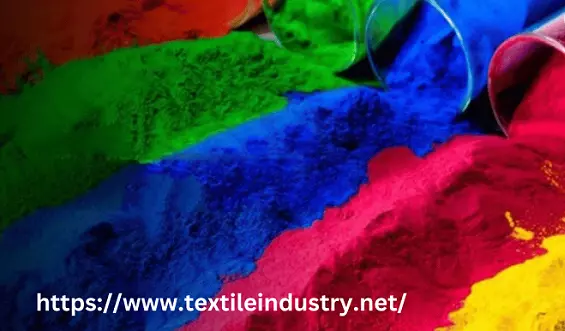Dyeing is a coloration process in the textile industry using dyes solution. After dyeing, dye molecules have an uncut chemical bond with fiber molecules. Recipe, Temperature, and time control are the key factors in dyeing. Here we are discussing on Introduction of Dyeing and Dyes and their Properties. The term simply means in Textiles “Coloration of fabrics or to generate a particular selective color into the treated substrates.” But mainly four major things influenced Dyeing in the process. These are:
- Colorants (Dyes & Pigments)
- Process
- Machinery / Equipment
- Substrates (Yarn, Fabric, Garments, etc.)
Colorants indicate both Dyes and Pigments. Let’s do a quick check on some identical differences between Dyes and Pigments:
| Dyes | Pigments |
| Mainly Organic | Mainly inorganic in nature |
| Have a strong or medium affinity towards the substrates, where going to apply. | No affinity towards substrates |
| Mostly soluble in the medium of applications | Insoluble in Medium (water) |
| No need for a binder for fixation. But used various Chemicals to improve affinity, adsorptions, and fastness properties. | It requires a binder for proper fastness properties. |

Witt’s theory: Witt’s theory is the fundamental theory for explaining Dyeing. It was introduced by German scientist Otto Witt in 1876. According to this theory, Dyes contain three major types of components in their structures. There are:
- Chromophores
- Chromogen
- Auxo chrome
Chromophore: Chromophores are color-bearing groups. It means these particular groups are responsible for the final colors. Mainly the compound contains double bonds (=) and (π electrons) showing color. So almost every chromophore are contain (= bonds). Π electrons absorbed energy and move to higher energy states and after returning to the normal stage it emitted energy as spectrum radiation. So complex compounds are color compounds. The most common Chromophores are: -NO2, -C=O, -N=N-
Chromogens: Where chromophores are attached. In general Benzene rings or long Chain aromatic compounds act as Chromogens.
Auxo chrome: Is are the terminal groups of the Dye structure. It affects hue modification, solubility, and reactions with applied substrates. Commonly: -OH, -NH2,-SO3 .
Types of Dyes (On the basis of Origins):
Both Natural and Synthetic dyes we find the textile industry.
| Natural Dyes | Synthetic Dyes |
| Obtain from natural substrates | Industrially produced and modified |
| Low affinity towards substrates | Stronger affinity towards substrates |
| Mordants used for improving affinity | No need for mordant. But used salt and soda for adsorptions and fixation |
| Limited color range | Large color range |
| Fastness properties are not so good. | Good fastness properties |
| Dull in shade | Bright in shade (Huge color range) |
| Ecofriendly but Expensive | Comparatively Cheap but not eco-friendly always. Few of them cause health hazards. |
**Substrates and Dyes
| *Cotton / Cellulosic Fibers | Effective Dyes | |
| *Direct | * Reactive | |
| * Vat | * Sulphur | |
| * Azoic | * Mineral | |
| *Pigments |
| * Animal Fiber (Wool, Silk) | Effective Dyes |
| *Acid *Reactive Dyes | |
| *Chrome Mordant Dyes | |
| *Metal Complex Dyes |
| *Nylon | Effective Dyes |
| *Acid *Reactive Dyes | |
| *Disperse Dye | |
| * Metal Complex Dye |
| *Polyester | Disperse Dye |
Basic properties of Dyes
Direct Dye:
- Cheap in cost.
- Vast color range.
- Easy application process.
- Poor fastness properties.
*Reactive Dyes:
- Form covalent bonds with fibers
- React with terminal groups of fiber.
- Very good wash fastnessBright shade large color range
- Dye Hydrolyzation is a major drawback.
*Azoic Dyes:
- Bright shade
- Dyes are absorbed on the surface only. So poor rubbing fastness
- Good wash fastness
- Limited color range
*Vat Dyes:
- Highest light and wash fastness
- Expensive
- Dull Shade
- Mainly used in heavy fabrics (Jeans, Suits)
- Dye presents in fabric as an insoluble form
*Cationic Dyes:
- Used for acrylic fibers.
- *Sulphur Dyes:
- Very good wash fastness.
- Dull shade.
- Cheaper in costSulphur Black is used in Umbrella cloth.
- Olive green for military applications.
*Mineral Color:
- Mineral Khaki is most popular in this series (Used for Tent and Military applications)
*Oxidation color:
- Used for non-textile applications (Umbrella/ Weather cloths)
- Aniline Black is the most popular in this series.
*Pigments:
- Insoluble in nature (Application Medium)
- Binder used for fixation in the fabric surface
- Fastness depends on Binder quality
*Pathogen Blue:
- Produce instant on the fabric surface.
- Very bright shade
Hope this article has given us some very basic concepts on Dyeing and Dyes and their Properties. We will discuss further on Dyeing and Dyes in upcoming articles.
- You may love to read: What is Natural Dye/ Dyes?
- Functions of different Chemicals used in the Textile Dyeing industry
- Application of Foam Technology in the Textile Industry
- Dyeing Faults, their Causes, and Remedies
- Basic Anatomy of Reactive dye
- Author: Najmul Hossain
- Lecturer, Department of Textile Engineering
- Chittagong National Engineering College, Affiliated with the University of Chittagong
- LinkedIn: Najmul Hossain


